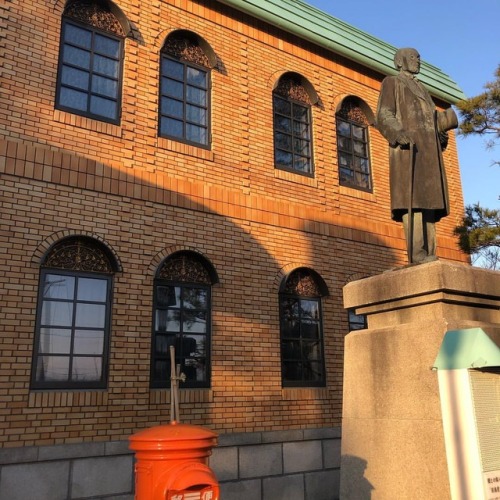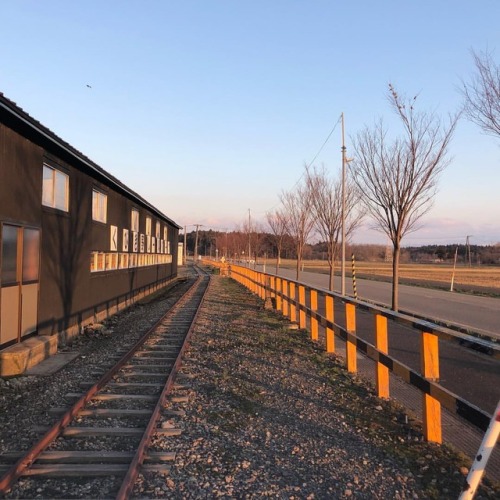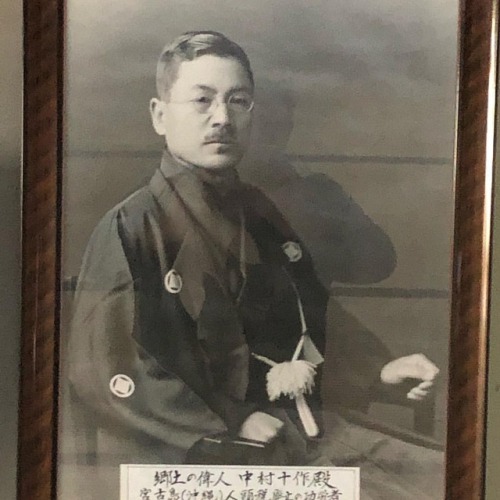#localhistory
Are you ready for the summer heat? Parishioners at St. Joseph’s A.M.E. Church in Durham used these hand fans to stay cool during hot summer services in the early 20th century. The fans were illustrated with scenes from the Bible and images of African American life. The backs featured advertisements for the Black-owned businesses that were an integral part of Durham’s Hayti District. #durham #durhamhistory #hayti #localhistory #summer (at David M. Rubenstein Rare Book & Manuscript Library)
Post link
Yesterday we visited the museum build on the birthplace of one of Joetsu ‘s favorite sons, Hisoka Maejima. At the age of 8months, his father passed away, and he became an orphan, and was eventually adopted by the Maejima family. He loved nothing more than to study, and went to Tokyo to learn about The Netherlands (one of the first countries to have trade relations with Japan) as well as medicine and English. He was a”Westernizer” when that was still rare. He is known as the “father of the Japanese postal system” and was also a railroad man (building the railway from Joetsu to Niigata city), a newspaper man (founding what is now the Yomiuri Shimbun) and also an original founder of Waseda University.
The Memorial Hall in his name features (thankfully) an audio explanation of his life and letters and awards from his past. And lots of postage stamps!
I include here pictures of a statue of Maejima, some of his “Inkan” (personal seals), and 3 “shakuhachi” bamboo flutes that he was proficient in. As a side note, Maejima is respected by learners of Japanese because he once campaigned for the end of kanji (Chinese characters) in favor of the phonetic hiragana and katakana. Fortunately or unfortunately, a writing system using all three scripts is now the standard.
I include the Wikipedia link here: https://en.m.wikipedia.org/wiki/Maejima_Hisoka.
#joetsu #maejimahisoka #localhistory #japanpost #waseda #stamps (at 前島記念館)
https://www.instagram.com/p/BuaE5JHDR2G/?utm_source=ig_tumblr_share&igshid=1hveezv5qvu24
Post link
You did it again, Joetsu. Just when I thought we had run out of interesting places, you reveal another historical treasure, just around the corner. Kubiki Rail Park houses eight narrow-gage train cars, shipped from Germany more than 100 years ago. Since 1914, these diesel and steam locomotives carried rice as well as people from the rice fields of Uragawara through ten stations to the sea at Kuroi. Both of these towns are now part of Joetsu City, which speaks for the area of the city.
When I arrived at dusk this evening, the “rail park” was closed, but a notice on the wall directed me to Mr. Nishiyama, caretaker and head of the “Preserving Treasures of Kubiki” NPO.
Mr. Nishiyama rushed right over to open the museum and give me a bit of a history lesson. When operations ceased in 1971, a locomotive enthusiast preserved the train cars in a tunnel in Kobe. In 2004 the cars were discovered and donated to the Rail Park in Kubiki. Transporting the rail cars and locomotives across the country was apparently quite an undertaking. These days, the train cars and locomotives have been restored to their original appearance, and actually run on tracks around the park once a month starting in spring. All this was about a 2 minute car drive from where my son plays soccer. Thank you Mr. Nishiyama, thank you Joetsu! #visitjoetsu #joetsu #train #locomotive #kubiki #kubikirailpark #localhistory (at くびきのお宝のこす会)
https://www.instagram.com/p/BuVz5aUjsnk/?utm_source=ig_tumblr_share&igshid=90jsckq3tf6q
Post link
The historic soba (buckwheat) noodle shop as well as my favorite gelato place were closed on Tuesday. Undaunted, I went in search of a local hero who I was just recently introduced to by @yamazakimieko. What’s the connection between this part of snowy Joetsu and the tropical seas of Okinawa?
In fact, one of the residents from here set off to find his fortune…in black pearls…on the tiny island of Miyakojima, far from the main island of Okinawa, closer in fact to Taiwan.
What he found there was a devistating, suicide-inducing TAX system enforced by the local leaders of the island. The burden was so great—women in particular spend days in near-slavery in dark warehouses weaving garments to be used as payment, the men often opted to lop off an arm to get some relief from the enforced tool.
This Joetsu hero, Nakamura Juusaku, took it upon himself to work to reform the draconian “nintouzei” tax system that he accidentally discovered.
At the corner museum I found, there were photos of Juusaku and his brother and others who helped reform the system, as well as more recent photos of children from Itakura and Miyakojima who continue an exchange program to this day. Though revered almost as a god on the island of Miyakojima, he was hardly known in his hometown. Until his death in 1943, he never told anyone back home about what he had accomplished.
#joetsu #juusaku #itakura #localhistory #friendship
https://www.instagram.com/p/BqzDWduDzDH/?utm_source=ig_tumblr_share&igshid=6hcy6qvyjsaq
Post link




